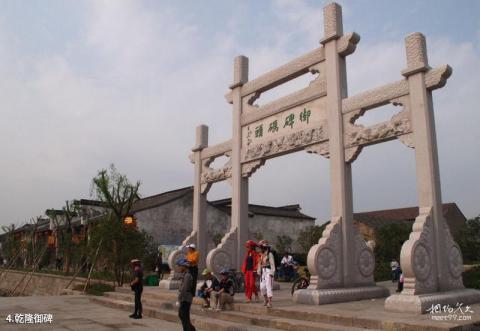
Introduction to the Qianlong Imperial Monument: The Qianlong Imperial Monument was erected on the second day of the first lunar month in the 16th year of Qianlong's reign in the Qing Dynasty (1751). It is located on the west side of the Jesus Church on Shuibei Street on the north bank of Guangji Bridge. It was the former Water Conservancy Bureau of Hangzhou Prefecture. Within the ruins. The imperial stele is 3.35 meters high, 1.4 meters wide and 0.5 meters thick. The body of the stele has a forehead and is engraved with a stone carving of two dragons grabbing a pearl. It is 1 meter high and 1.5 meters wide. There is a stele base under the stele body. The height of the stele base is 1.1 meters wide and 1.1 meters wide. 1.8 meters, 1 meter thick. The height of the entire monument is 5.45 meters. The main text of the stele is 429 characters, and the inscription is 10 characters. There are cloud and dragon patterns engraved around the stele. According to historical records, Emperor Hongli visited the south in the 16th year of Qianlong's reign (1751) to inspect the payment of imperial grain by Jiangsu, Zhejiang, and Anhui provinces. It was found that the two provinces of Jiangsu and Anhui had huge arrears, but Zhejiang Province had not defaulted. In order to commend Zhejiang Province, the emperor exempted the landowners from Zhejiang Province 300,000 taels of money and grain with a stroke of his pen. He also carved the "sacred edict" into stone and informed the officials and the people. Since Shuibei Street was under the jurisdiction of Deqing and Hangxian counties in the past, this monument was used as the boundary, with Hang County to the east of the monument and Deqing County to the west of the monument. In addition, this monument has long been built as a wall by residents, and only the top part is exposed, so the entire monument cannot be seen. Therefore, for a long time, people have always regarded this monument as the boundary monument between the two counties.
